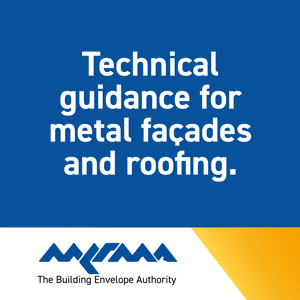When heritage meets innovation
- Specify & Build
- 5 minutes ago
- 3 min read
How Acorn Timber Engineering transformed a Grade II-listed industrial landmark into contemporary apartments, balancing heritage preservation with modern performance.

The Engine House, part of the Linotype Works in Broadheath, was built in 1897 to house specialist typesetting machinery. Once the heart of a thriving industrial hub, it stood as a testament to late Victorian engineering. By 2021, the building faced demolition, with structural decline and redevelopment pressures threatening its survival. A successful bid to Historic England secured Grade-II listed status in recognition of the building’s historic and architectural significance. This offered protection but also meant that redevelopment had to meet stringent heritage requirements.
Its transformation into apartments was delivered through collaboration between Acorn Timber Engineering and Shelbourne Estates, part of the Morris Homes Group, blending the strength of the site’s industrial past with the comfort of modern living. The original building measured 12 metres wide, 20 metres long, and 14 metres tall. Structural engineers Atkinson Peck concluded it was unsuitable for conventional conversion. Instead, it was dismantled, with original features such as the travel crane, stonework and slate tiles catalogued for reinstatement.
At the centre of the project was Elicia Brumley, Senior Designer at Acorn Timber Engineering. Having started her career as one of Acorn’s first apprentices, she has risen to become the sole designer for key client Morris Homes. Her work on The Engine House earned the Conversion and Refurbishment Project of the Year Award at the Trussed Rafter Association’s Roofscape Design Awards 2025.

Precision in timber engineering
Acorn designed and manufactured more than 200 truss components, covering 18 truss types. The most notable was a trussed rafter that was over 12 metres in length, with a horned bottom chord engineered to slot into the parapet wall. Attic truss monos were introduced to create fire-door access without altering the historic profile. A discreet mechanical ventilation with heat recovery system was integrated, with trusses positioned to accommodate pipework and provide harness anchor points for safe maintenance.
Reconstructing the roof presented several hurdles. Spanning 20 metres, the design required detailed calculations to ensure trusses could manage additional loads. Extended bottom chords were developed to match the parapet walls while enhancing resilience. On-site logistics were equally demanding, as each truss was labelled to match design drawings, ensuring clarity during installation. With limited space, deliveries were staged over two days: trusses on day one, spandrel panels on day two. Panels were fabricated in smaller sections to ease handling and reduce risk during lifting.
Handling large trusses and spandrel panels on a restricted site required meticulous planning. Coordination between Acorn and Morris Homes ensured efficient unloading and safe placement. Modern health and safety practices, a world apart from the conditions in 1897, were rigorously applied to safeguard workers and maintain compliance.

Sustainability in action
Sustainability was embedded throughout the project. All timber was PEFC-certified, sourced from responsibly managed forests. Truss designs were optimised to minimise offcuts, and transport was consolidated to cut emissions. Original slate tiles were salvaged and reused wherever possible. Where replacements were required, replicas were produced in factory-controlled settings for accuracy and waste reduction. These measures retained authenticity while reinforcing environmental responsibility.

Legacy restored
The Engine House now stands as a prime example of how heritage and modern engineering can combine. For Acorn Timber Engineering, the project reinforced its reputation for technical excellence, sustainability and sensitivity to heritage.
Elicia says: “Working on The Engine House was an incredible experience. Preserving its character while making it fit for modern living was both a challenge and a privilege. Knowing it will be enjoyed for generations makes it especially rewarding.”
Nick Boulton, Chief Executive of the Trussed Rafter Association, adds: “The Engine House is a prime example of how heritage and modern design can coexist beautifully. Elicia’s precision and commitment to sustainable design has brought the building back to life, stronger and more resilient than ever.”
The Engine House is a showcase of how conservation and innovation can be combined, proving that even the most historic structures can enjoy a sustainable future.
.png)























































.png)

